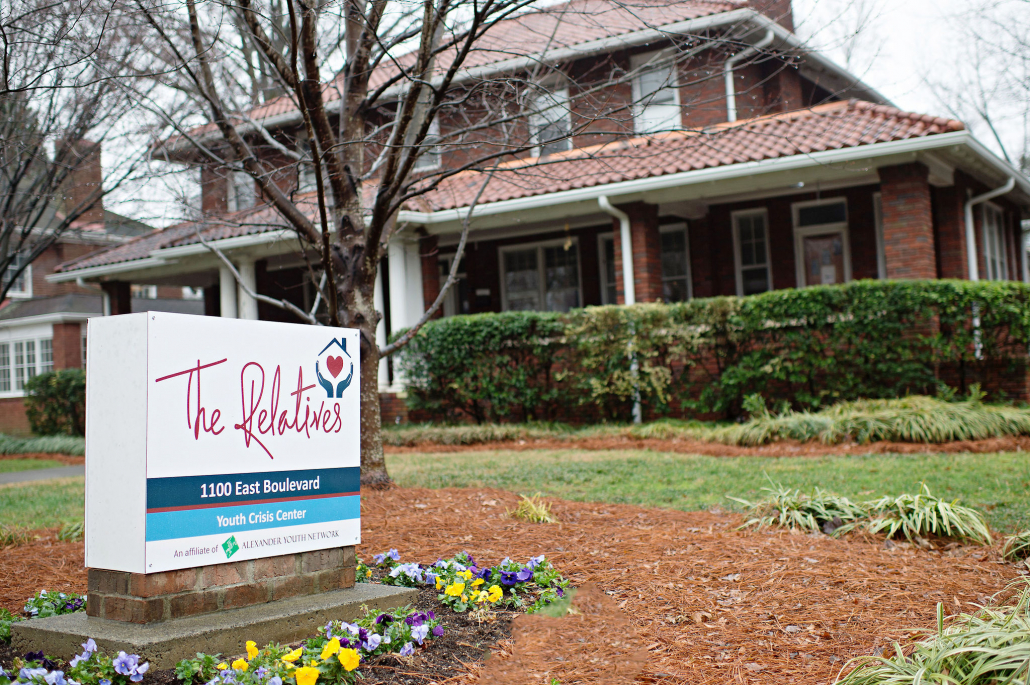Trish Hobson
Executive Director
The Relatives
The Charlotte Mecklenburg Emergency Shelter System: Assessment of Capacity and Utilization Report, released in April 2019, recommends solutions to optimize the emergency shelter system. One of these opportunities is employing diversion resources across the entire homeless services system. Diversion is a cost-effective way to serve the immediate needs of homeless individuals and families, while simultaneously maximizing emergency shelter capacity and targeting shelter beds and resources to the individuals and families who need it the most.
Diversion, when implemented effectively, helps households to find an alternative to shelters. Diversion assistance includes options such as funding transportation to stay with a family member or financial assistance to find other safe, temporary housing solutions. Like other housing interventions, diversion with youth must be tailored to meet the needs of youth experiencing homelessness.
This blog post explains the challenges that are unique to serving homeless youth and the steps our community can take to address those challenges.
WHAT IS YOUTH HOMELESSNESS?
Youth is defined by the U.S. Department of Housing & Urban Development (HUD) as persons younger than age 25. Youth homelessness looks different from adult homelessness. Most homeless youth do not seek housing assistance by going to an emergency shelter; rather, many homeless youth sleep doubled up on couches belonging to friends and family. The Voices of Youth Count (VoYC), which is led by Chapin Hall at the University of Chicago has conducted extensive research on youth experiencing homelessness across the United States. The VoYC reports that 1 in 10 young adults age 18 to 25 experience homelessness in a given year, which includes those doubled up and/or couch surfing.
The Charlotte-Mecklenburg Point-in-Time (PIT) Count generally captures fewer than 100 homeless youth during the annual one-night census in January. The PIT enumerates youth who experience homelessness in emergency shelter, in transitional housing, or those who stay outside in unsheltered locations. Using the VoYC estimates, a youth homelessness estimate in Charlotte-Mecklenburg would bring the total to more than a thousand. This estimate includes youth experiencing homelessness in doubled up settings.
SERVING YOUTH EXPERIENCING HOMELESSNESS IN CHARLOTTE-MECKLENBURG
Charlotte-Mecklenburg does not have an emergency shelter that specifically works with homeless children and youth. The Relatives’ Crisis Center serves as the only emergency shelter dedicated to temporarily house children and youth in our community; the population served by The Relatives ranges from age 7 to 17. Other emergency shelters in Mecklenburg County like the Salvation Army Center of Hope and Men’s Shelter or Charlotte serve unaccompanied youth, but these shelters also serve other adults. This means that youth are temporarily housed with all others residing in the shelter.
The Relatives works with the guardians of youth to find a housing placement for their child or teen that is appropriate and meets their approval. The Relatives is not able to place youth into an alternate arrangement without guardian consent. While our client is the child or youth, the guardian remains the decision-maker. This complicates efforts when we look for housing solutions; it also creates additional challenges to provide diversion assistance.
SO, WHAT
Youth homelessness is not just a shelter problem; it is a community problem. With so many youth experiencing homelessness outside of a shelter, it remains largely an invisible problem.
According to HUD, the best youth housing strategy is to engage families, whenever appropriate, through partnerships with organizations such as schools, child welfare agencies, and other human services and homeless services providers. Similarly, the VoYC Study recommends engaging with youth using the systems they naturally access. These public systems also present opportunities to integrate interventions targeting homeless prevention and especially diversion.
A coordinated approach to serving youth across emergency shelters is an important first step to ensure that youth who need emergency shelter are connected with housing solutions. In addition, it is vital that the emergency shelter system work with the community to strengthen connections across all institutions and organizations serving children and youth.
Since 2016, Trish Hobson has served as the Executive Director of The Relatives, a 45-year-old agency serving runaway, homeless, and transition-age youth in Charlotte, NC. She has a long history of working with the homeless population, having also worked at the Men’s Shelter of Charlotte for six years.


